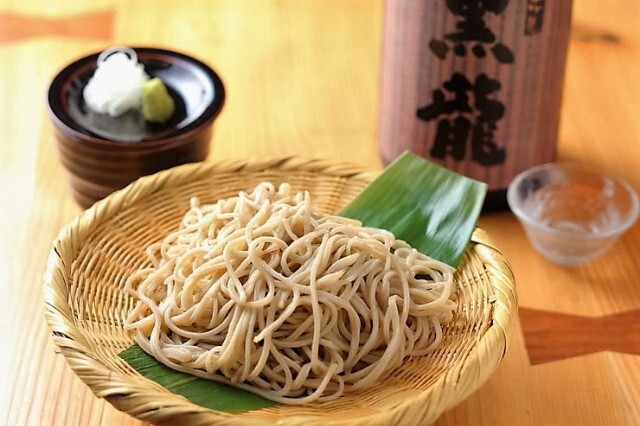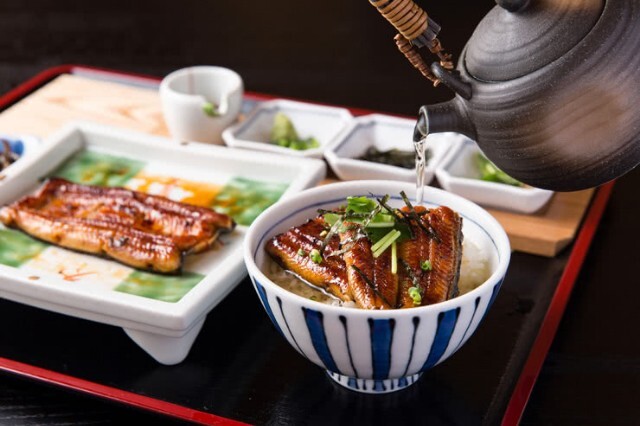![Best Soba in Tokyo: 5 Recommended Noodle Restaurants]()
Soba is a type of noodle that has been eaten in Japan for centuries. Long and thin, soba noodles have an appearance similar to spaghetti, however are a little chestnut in color and nutty in flavor, as they are made from buckwheat flour rather than wheat flour. The use of buckwheat flavor also makes soba lower in calories than other types of noodles, as well as being an excellent source of fiber and protein. Soba noodles can be prepared from dried factory-cut noodles or eaten fresh and hand-cut, known as “te-uchi soba”.
Continue reading Best Soba in Tokyo: 5 Recommended Noodle Restaurants
![Unagi and Anago: 8 Wonderful Ways to Eat Japanese Eel]()
With a long, snake-like appearance, eels may seem an unlikely delicacy--but several varieties of Japanese eel have been popular for hundreds of years. This includes unagi (freshwater eel), anago (saltwater eel) and hamo (conger eel). Unagi in particular is prized for its soft, fatty meat and bold, rich taste.
Continue reading Unagi and Anago: 8 Wonderful Ways to Eat Japanese Eel
![Grilled Glory: The Best Yakiniku in Shinjuku and Shibuya]()
Yakiniku is a Japanese-style of barbecue dining. It’s characterized by a tableside charcoal brazier or a gas grill where customers can cook their own cuts of meat and vegetables. Yakiniku became popular in Japan during the early Showa period, influenced by Korean barbecue dishes like bulgogi, which were brought to Japan by Korean immigrants. Over time, yakiniku evolved into its own Japanese style of barbecue, featuring unique cuts of meat and Japanese dipping sauces called “tare”. One feature of the Korean origins that does hold strong is the assortment of side dishes like kimchi offered with yakiniku—albeit sweeter and less spicy versions have been adapted for the Japanese palate.
Continue reading Grilled Glory: The Best Yakiniku in Shinjuku and Shibuya
![Sapporo Restaurants: What to Eat in Japan’s Delicious North]()
Hokkaido, the northernmost island of Japan, is famed for its agricultural bounty, delicious milk and dairy products, and fine seafood. Sapporo, the prefecture’s capital and Japan’s fourth largest city, is a fantastic place to sample this high quality of dining. A charming destination with modern comforts amid turn-of-the-century red brick buildings, Sapporo offers a vibrant food scene that highlights Hokkaido’s excellent local ingredients.
Continue reading Sapporo Restaurants: What to Eat in Japan’s Delicious North
![Okonomiyaki is Osaka's Savory and Social Japanese Pancake]()
>Okonomiyaki is a regional dish from Osaka, a city from western Japan whose residents are well-known for their love of good food and good drink, especially with family or friends in tow. Osaka is home to a number of famous street foods, and okonomiyaki is one of the very best. Read on to learn exactly what okonomiyaki is, what’s different about two delectable styles it comes in, and most importantly, how to make okonomiyaki and enjoy it for yourself whether at home or dining out.
Continue reading Okonomiyaki is Osaka's Savory and Social Japanese Pancake
![Japanese Autumn Food: A Bounty of Delectable Ingredients]()
As the days grow cooler and the foliage turns to red and gold, the long humid days of Japanese summer give way to autumn, Japan’s traditional season of food and dining. Known as shokuyoku no aki, or the “season of hearty appetites,” the fall harvest is the best time to enjoy a bountiful selection of Japanese ingredients at their very peak. Read on for 13 autumnal ingredients as well as featured Japanese autumn food to try.
Continue reading Japanese Autumn Food: A Bounty of Delectable Ingredients
![15 Great Ginza Restaurants: French Fusion, Izakaya and More]()
Both in Japan and worldwide, Ginza is a place synonymous with material luxury, discerning artistic taste and culinary delights. While people today flock to Ginza’s upscale department stores, art galleries and fashionable boutiques, it has also historically been a place where Tokyo’s artisans, painters, and noh and kabuki actors go to experience its refined international atmosphere and cafe-lined streets. Avenues close to vehicle traffic on weekends so that shoppers and artistic types alike can amble through the promenade at a leisurely pace.
Continue reading 15 Great Ginza Restaurants: French Fusion, Izakaya and More








